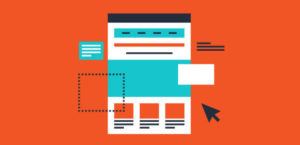Top 10 Tips For Designing Effective Landing Pages
One of the most effective ways to improve the success of your PPC campaigns and optimize your ROI is to optimize the landing pages. WordStream has provided hundreds of landing page tips and advice to help you boost your promotions over the last few years. Landing pages and the lead-capture types that go with them are without a doubt two of the most important components of lead generation. Advertisers’ capacity to turn website traffic into subscribers and create reconversions would’ve been severely limited if they didn’t have them.
That’s because landing pages allow us to guide website owners to more targeted pages with a much greater rate of lead capture than features on certain web pages.
Landing pages often concentrate the visitors’ solely on a particular deal, removing any other obstacles from your websites. A landing page’s visitors are there for one reason: to get a deal by filling out a lead-capture form.
However, also with landing pages, converting traffic into subscribers is much convenient when everything is said and completed. When it comes to creating and enhancing landing pages, there are several quality standards that any marketer should keep in mind.
- Keep the messaging constant across ads and landing pages.
While this would seem to be a no-brainer, you’d be surprised by how many advertisers struggle to do so. You might as well get a broken URL in your ad if there’s a discrepancy between what ad implies as well as what the homepage produces.
This may seem self-evident, but I’ve lost track of how many marketers send PPC visitors to their website (bad) or a standard splash page (good) (worse). Maintain a clear message. This is also relevant from a graphical viewpoint.
- Choose a reason for your landing page.
Landing pages, according to Toptal, exist to increase conversions. As a result, you must ask yourselves what kind of conversion you hope to achieve. The following are some of the most popular conversion objectives:
Growing brand recognition. This entails your automated email list and cultivating a relationship with this man through content about your brand and products/services, which leads to a loyal audience and increased customer development.
The process of generating leads. This entails gathering contact information from potential consumers who are looking in your product or service so that a member of your sales department can follow it up.
Profits. This helps to make easy transactions easier by highlighting a particular product and allowing developers to access it to their cart or acquire this without even reaching your landing page.
Defining your aim is essential to the planning phase because it will affect the design of your landing page.
- Provide discreet content
Your landing page’s contents should be short and sweet, emphasizing your unique value proposition (UVP). The type of content you provide will be determined by the product and service you’re offering. Keep in mind that you only have about eight seconds to persuade consumers that your bid is worthwhile. Excessive details will confuse users, causing them to abandon the website. Use precise terms to engage with customers and explain how you will improve their lives.
- Use Color Psychology to Your Advantage
When it comes to landing page optimization, color design is crucial. Color elicits feeling, which may result in negative or positive emotions, according to science.
Satyendra Singh discovered in a peer-reviewed research paper that it only takes 90 seconds for a consumer to shape an opinion on a subject. And the color of the product simply determines 62–90 percent of the communication.
- Maintain a straightforward design.
A successful landing page interface is sleek and appealing, with details presented in a non-intrusive manner. Using a clean, clear template that has plenty of white energy to store people focused on the product and call to action instead of being sidetracked by repetitive visual elements. To make it much easier for tourists to read and understand what your landing page is really about, use a broad font. Also, be certain that your template does not contribute to the page’s page loading.
Update your page’s layout at higher settings to ensure that even people with older monitors can see your leading and CTA without having to scroll. Also, remember to check how your concept looks on mobile devices.
- Make above-the-fold placement a top priority.
Keep the most crucial detail and request at the top of the front page at all times. This ensures that tourists get an important glimpse about what you’re providing and where they can take action regardless of where the cover, or bottom of your web browser, involves.
This isn’t to suggest that you can’t have material below the fold on your landing page. While grabbing visitors’ interest is the primary goal of above-the-fold content, you also want them to scroll down to learn more. Just below requests should be put at regular intervals, according to Neil Patel. This landing page layout recommendation will help you improve conversions.
- Change the Sign-Up Flow of Your Landing Pages Totally
Larry likes to say that small changes lead to small outcomes, and he’s right. Moving button shades and font kerning can appear to move the needle, but you’re wasting valuable time and losing out on major transformation possibilities To see big results, you need to make big changes, and one of the biggest changes you can make is drastically altering the sign-up flow of your landing pages.
This landing page provides three different ways for visitors to sign up, which are each designed uniquely to satisfy the visitor’s unique needs.
- Keep it free of distractions.
When creating your landing page, ensure that there were no distracting elements that will force visitors to abandon it. Visitors will quickly click away before signing in to your bid if your home page has a menu bar, for example.
Disable all keyboard shortcuts, footer links, and other individual and collective connections from your landing page. After you’ve removed all of the unwanted ties, your CTA icon would be the only one left to press. A landing page that is free of distractions will help you boost conversion rates and lower your load time.
- Keep the F-shape in mind.
The human mind has a habit of seeing something from the left. If it’s a piece of text or a video, we prefer to concentrate on the left side of the frame first, then the top, and finally the middle. After that, the majority of the areas would be protected.
We essentially follow a F or Z-pattern. As a result, when a visitor reaches the first fold of your landing page, their mind will begin searching it from the left. Because you have anything extremely enticing on the right, he or she will not look with it until the mind has completed its evaluation of the left hand. As a result, your CTA should be placed on the left side of the page.
- Your visuals are important.
People process pathways than text in particular, so integrating them into your landing page would benefit you.
If you use an image or photos, particularly a banner or key stakeholder, they ought to be eye-catching and visually support your bid. As a visual element, you can also integrate a video on your site. Videos are excellent for illustrating complex products such as apps. It’s estimated that at least one visual component be put above the fold, depending on the type of visual elements you use.
Landing pages have been popular for a long time. A landing page often brings in the right collection of traffic, whether such a fresh product is being launched or a particular product/service needs to be acknowledged.
Sadly, a landing page is frequently associated with a website’s homepage. This can occur to a company owner who is entirely unaware of the design world, or even to a developer who is brand new to the field or lacks sufficient expertise.









